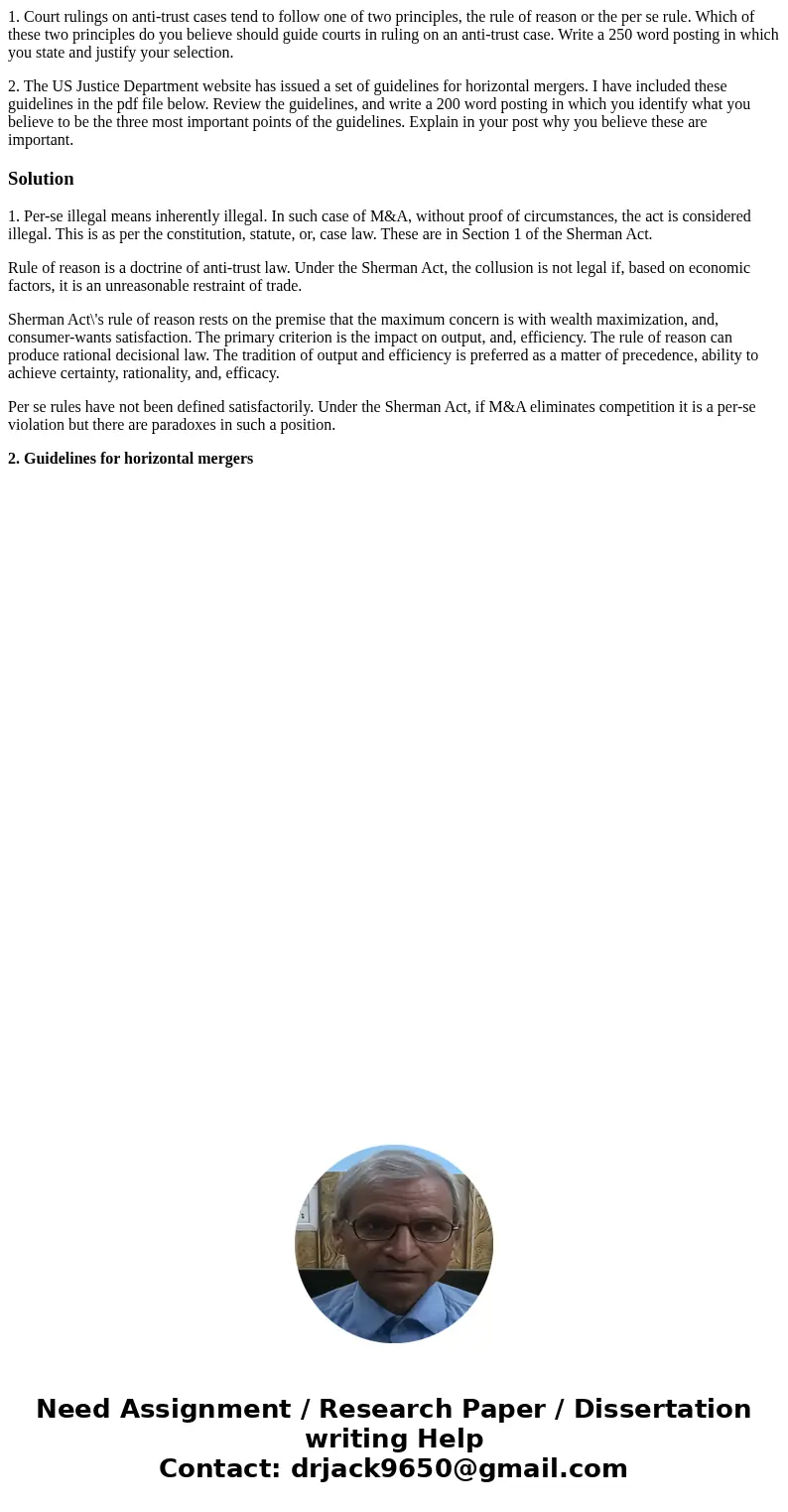1 Court rulings on antitrust cases tend to follow one of two
1. Court rulings on anti-trust cases tend to follow one of two principles, the rule of reason or the per se rule. Which of these two principles do you believe should guide courts in ruling on an anti-trust case. Write a 250 word posting in which you state and justify your selection.
2. The US Justice Department website has issued a set of guidelines for horizontal mergers. I have included these guidelines in the pdf file below. Review the guidelines, and write a 200 word posting in which you identify what you believe to be the three most important points of the guidelines. Explain in your post why you believe these are important.
Solution
1. Per-se illegal means inherently illegal. In such case of M&A, without proof of circumstances, the act is considered illegal. This is as per the constitution, statute, or, case law. These are in Section 1 of the Sherman Act.
Rule of reason is a doctrine of anti-trust law. Under the Sherman Act, the collusion is not legal if, based on economic factors, it is an unreasonable restraint of trade.
Sherman Act\'s rule of reason rests on the premise that the maximum concern is with wealth maximization, and, consumer-wants satisfaction. The primary criterion is the impact on output, and, efficiency. The rule of reason can produce rational decisional law. The tradition of output and efficiency is preferred as a matter of precedence, ability to achieve certainty, rationality, and, efficacy.
Per se rules have not been defined satisfactorily. Under the Sherman Act, if M&A eliminates competition it is a per-se violation but there are paradoxes in such a position.
2. Guidelines for horizontal mergers

 Homework Sourse
Homework Sourse